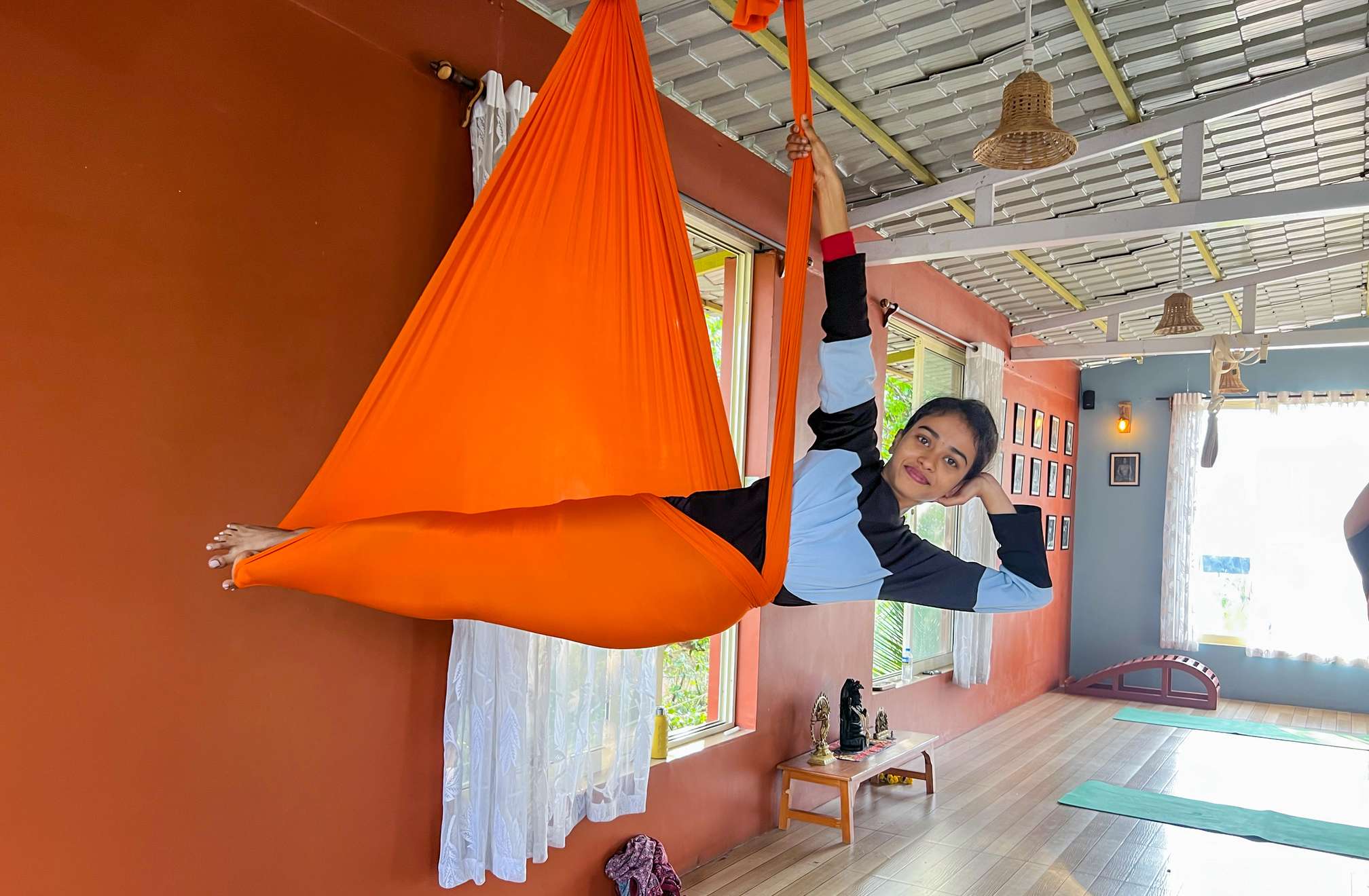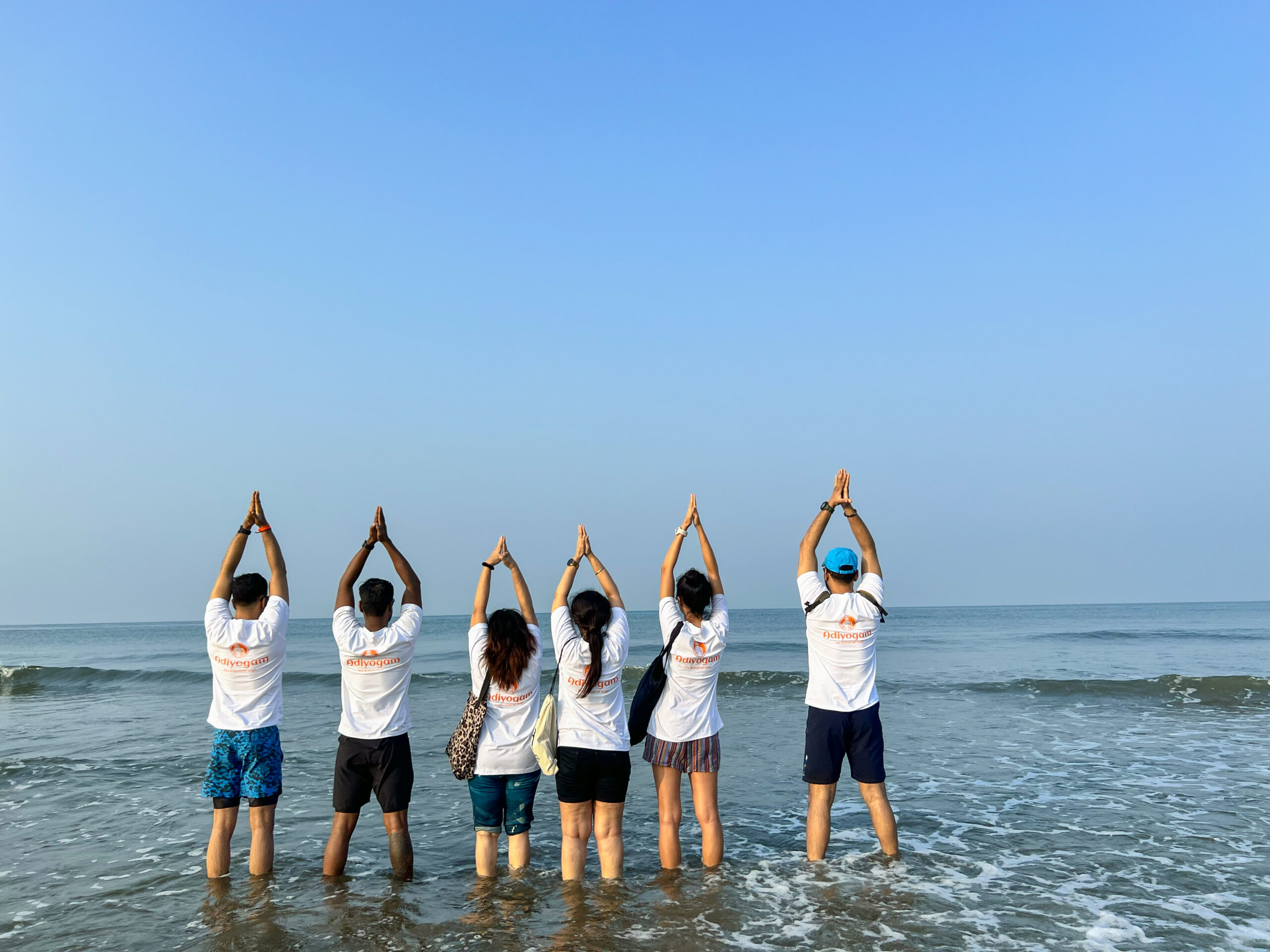Nadishodhana pranayama (Alternate nostril breathing)
पराणं छेदिडया पिबेन्नियमितं भूयो|अन्यथा रेछयेत
पीत्वा पिङ्गलया समीरणमथो बद्ध्वा तयजेद्वामया |
सूर्य-छन्द्रमसोरनेन विधिनाभ्यासं सदा तन्वतां
शुद्धा नाडि-गणा भवन्ति यमिनां मास-तरयादूर्ध्वतः || १० ||
prāṇaṃ chediḍayā pibenniyamitaṃ bhūyo|anyathā rechayet
pītvā pingghalayā samīraṇamatho baddhvā tyajedvāmayā |
sūrya-chandramasoranena vidhinābhyāsaṃ sadā tanvatāṃ
śuddhā nāḍi-ghaṇā bhavanti yamināṃ māsa-trayādūrdhvataḥ || 10 ||
If the air be inhaled through the left nostril, it should be expelled again through the other, and filling it through the right nostril, confining it there, it should be expelled through the left nostril. By practising in this way, through the right and the left nostrils alternately, the whole of the collection of the nadis of the yamîs (practisers) becomes clean, i.e., free from impurities, after 3 months and over.
4 variations:
Beginner (Stage 1) :
- In and ex one Nostril (left/right) only (surya or chadra anuloma viloma)
- In (left/right) Ex (right/left) one way breathing (surya or chandra bhedana)
- Intermediate (Stage 2):
- In(left) Ex (right), In(right) Ex (left)- Nadishodana or anuloma viloma
- Advanced (Stage 3):
- In(left) hold, Ex (right), In(right) Hold, Ex (left)- Kumbhaka
- In(left) hold (maha bandha), Ex (right), In(right) Hold(Maha bandha), Ex (left)- Kumbhaka with Bandha
Note: Ratios has to be adoted only once you master Stage 1&2
When you are able to equally inhale and exhale for 24:24 (in:ex) counts than you should go for next stages i.e; 3 stages in Ratios :
- Beginner Ratio 3:12:6, 6:24:12, &12:48:24
- Intermediate Ratio 14:56:28 &16:64:32
- Advanced Ratio 18:72:36, &20:80:40
Benefits:
- Improves blood circulation and purifies blood.
- Balances the body breath and mind.
- Removes all the blockages in the pranic energy channels.
- Cleanses, strengthen and tones nervous system.
- Relieves stress and anxiety
- Improves lung capacity
- Balances left and right hemisphere of the brain.
- Very helpful for pregnancy.
- Prevents diabetes
- Benefit the people with Asthma, migraine, headache, gastric, depression, and other neurological issues.
- Removes all the blockages of arteries and relieves hypertension.
Limitation:
(In case of retention of breath) heart problems, pregnancy, menstruation.






